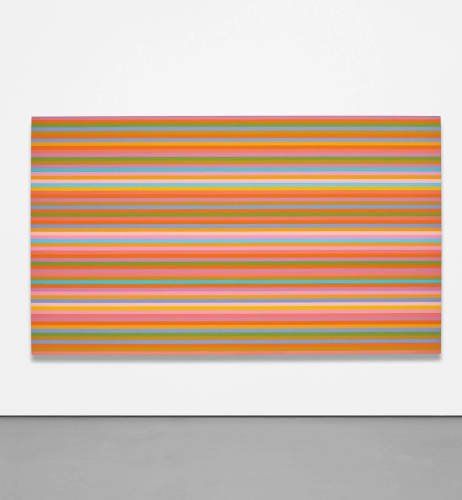Bridget Riley is a British artist known for her singular Op Art paintings. Melding clean lines, color arrangements, and geometric precision she creates optically compelling visual effects, as seen in her work Cataract 3 (1967). Riley’s use of gradients and variations in tone stems from her admiration for the Pointillist Georges Seurat. “The eye can travel over the surface in a way parallel to the way it moves over nature. It should feel caressed and soothed, experience frictions and ruptures, glide and drift,” she said of her work. “One moment, there will be nothing to look at and the next second the canvas seems to refill, to be crowded with visual events.” Born on April 24, 1931 in London, United Kingdom, she studied at Goldsmiths College from 1949 to 1952 and the Royal College of Art from 1952 to 1955. In the following years, the artist began experimenting with the color effects developed by Georges Seurat in the 19th century, leading her to the practice for which she is now known. Today, Riley is often grouped along with other practitioners of Op Art such as Victor Vasarely and Richard Anuszkiewicz. She currently lives and works in London, United Kingdom. Her works are currently held in the collections of The Museum of Modern Art in New York, the National Gallery of Art in Washington, D.C., the Tate Gallery in London, and the Peggy Guggenheim Collection in Venice.
via artnet.com
